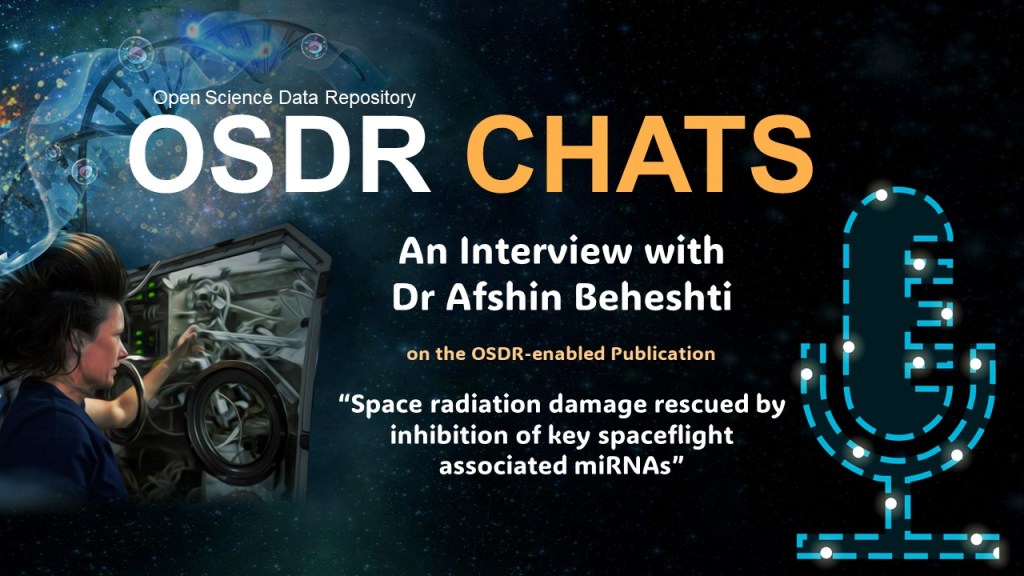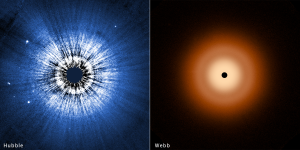Cassini Significant Events for 3/03/05 - 03/09/05
March 15, 2005
(Source: Jet Propulsion Laboratory)
Cassini Significant Events
for 03/03/05 - 03/09/05
The most recent spacecraft telemetry was acquired today from the Goldstone
tracking station. The Cassini spacecraft is in an excellent state of health
and is operating normally. Information on the present position and speed of
the Cassini spacecraft may be found on the "Present Position" web page
located at http://saturn.jpl.nasa.gov/operations/present-position.cfm .
Activities this week:
Science this week included outer magnetospheric survey observations
performed by the entire suite of Magnetospheric and Plasma Science (MAPS)
instruments, and a MAPS ring and satellite campaign to investigate the
exchange of plasma, neutrals and dust between Saturn's ionosphere, rings,
and the icy satellites in the inner magnetosphere.
Optical remote sensing activities (ORS) included Visual and Infrared Mapping
Spectrometer (VIMS) observations of the E and G Rings, and Imaging Science
Subsystem (ISS) satellite orbit determination campaigns, feature tracks of
Saturn's winds and clouds, and observations of the transit of Janus across
Enceladus and Prometheus. ISS jointly participated with Ultraviolet Imaging
Spectrograph (UVIS) to observe Dione, Enceladus, Mimas, Rhea and Tethys.
Seven hours of ORS images of Rhea were obtained during a 136000 km flyby
along with an F-ring movie and brief imaging of Epimetheus and Iapetus.
Thursday, March 3:
Uplink Operations sent commands to the spacecraft for a VIMS Fast
Housekeeping overlay mini-sequence, Radio and Plasma Wave Science (RPWS) +Z
Antenna Calibration, and transfer of VIMS Instrument expanded block files to
the solid-state recorder.
The targeting results from last week's Orbit Trim Maneuver (OTM)-15 are
looking so good that there is a chance that the Navigation team will
recommend canceling OTM-16, the Enceladus approach maneuver.
The OTM-16 approval meeting is scheduled for Saturday at 1:00 PM Pacific
time. Normally the Orbit Determination (OD) solution would not come out till
the day before. Instead, Navigation is providing an early OD and pointing
plots today. Plots with and without the OTM will be made available tonight
for evaluation and feedback by Friday. Right now the plan is to redo the
plots using the Friday afternoon OD as well.
UPDATE: So far it really looks like a no-brainer. You have to look *very*
closely at the Composite InfraRed Spectrometer FP1 images to find any
differences between with and without the OTM. We will continue to look at
this tomorrow with an updated OD, and also look at a few other observations
besides those in the Satellite Orbit Science Team (SOST) segment.
Friday, March 4:
After receiving the expected OD solution today we re-did the plots. These
are pretty much identical to yesterdays and to each other. There is now an
11:00 AM status meeting planned for Saturday where the ORS representatives
may call in to check and comment if they are OK with canceling the maneuver.
As of now the consensus is to cancel.
RPWS performed an 11.5-hour post-probe release antenna calibration today.
The S11 Science Operations Plan Update process completed today. The
sequence product was delivered to the sequence leads for the start of the
Science and Sequence Update Process (SSUP) process on Tuesday.
A lightning strike interrupted Cassini tracking from the DSN station #15 in
Goldstone, California today. Station 26 was brought up in real-time to
provide additional support.
Saturday, March 5:
Due to the very successful OTM-015, which executed this past week, OTM-016
was determined not to be necessary. Consequently, after reviewing the
impacts to pointing for Enceladus and T4, we decided to cancel OTM-016.
Ok, so why was all this so important and worth reporting? Pointing and
targeting are very tightly controlled on Cassini. The instrument teams plan
years in advance on what observations will be taken based on the proximity
of the spacecraft to a target, and where we are pointing the spacecraft -
and subsequently the instruments - at the time. If we cancel a maneuver, it
will only be if there is virtually no change to pointing with, or without
the maneuver. Hence the importance of science involvement in this decision.
OTM-15 put the spacecraft dead on where it needed to be to obtain the
Enceladus observations. So, we cancelled OTM-16 and lightened the workload
just a bit for a few folks.
Monday, March 7:
We are getting ready for the Enceladus targeted flyby. Uplink Operations
sent an Ion and Neutral Mass Spectrometer Enceladus Measurement program and
a RADAR Enceladus Trigger Update to the spacecraft.
Today the SOST hosted an Enceladus preview meeting to discuss science
objectives and planned activities.
All parties have approved the Planetary Data System Data Product Software
Interface Specification for the UVIS instrument. The UVIS archive
development milestones are now complete.
Tuesday, March 8:
Today we performed a Reaction Wheel momentum unload onboard the spacecraft.
The S11 Science and Sequence Update Process (SSUP) kicked off today. In
ten weeks the process will conclude and the new background sequence will be
uplinked to Cassini.
A picture of the large crater on Mimas was Astronomy Picture of the Day
today.
Wednesday, March 9:
The Rev 4 Enceladus flyby today was the first targeted flyby of this icy
moon. The closest approach distance was 500 km. Inbound, for about 7 hours,
optical remote sensing measurements were made to probe the geologic history
and composition of the surface of Enceladus, measure surface temperatures,
and investigate whether a tenuous atmosphere exists.
Ten minutes prior to closest approach, Cassini turned into a "safe
spacecraft" attitude as it flew through the E-ring, the particle density of
which is highest at the orbit of Enceladus.
This was Cassini's first pass through the central region of Saturn's E ring.
The E ring is a widely distributed, diffuse ring dominated by very small
particles which extend from the orbit of Mimas past Dione, about 3 to 8
Saturn radii, and thousands of kilometers above and below the ring plane.
Near today's Enceladus flyby, the spacecraft oriented its High Gain Antenna
into the incoming particle direction to protect it from any large material
that may be in the centermost section of the E ring.
UPDATE: Analysis to see if any large particles struck the antenna is
currently underway. No spacecraft effects during this crossing have been
observed.
After the E-ring crossing, only a crescent of Enceladus was illuminated,
allowing for key measurements to characterize any thermal activity and
surface temperatures.
RADAR performed scatterometry and radiometry measurements to understand ice
"cleanliness."
Along with the Enceladus flyby, Cassini flew within ~85,000 km of Enceladus'
neighbor Tethys, providing the opportunity for optical remote sensing
observations of that moon.
Wrap up:
That's it for this week.
The Cassini-Huygens mission is a cooperative project of NASA, the European
Space Agency and the Italian Space Agency. The Jet Propulsion Laboratory, a
division of the California Institute of Technology in Pasadena, manages the
Cassini-Huygens mission for NASA's Science Mission Directorate, Washington,
D.C. JPL designed, developed and assembled the Cassini orbiter.


































